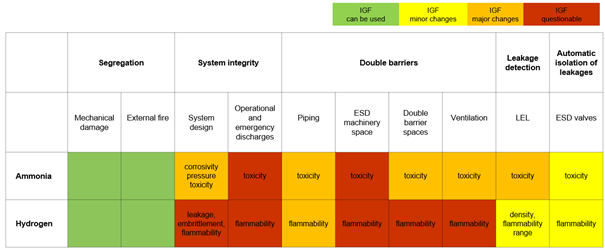INSIGHT INTO ZERO-CARBON FUELS SAFETY AND REGULATIONS
Lack of international safety regulations is identified as a key barrier against implementation of zero-carbon fuels.
To reduce this barrier, the Nordic Roadmap project has been tasked with providing the Nordic countries with knowledge on safety characteristics of ammonia and hydrogen and with developing corresponding suitable safety barriers to contain the safety risks. This knowledge base is intended as a tool to develop a common understanding of the safety challenges generated by introducing ammonia and hydrogen as ship fuels, and to strengthen the cooperation between the Nordic countries in finding safe ways to store, distribute and consume such fuels onboard. In co-operation with Nordic Maritime Administrations and other Nordic stakeholders the project output can also be used to develop submissions to the International Maritime Organization (IMO) to help accelerate the international development of regulations on the use of ammonia and hydrogen as ship fuels. The project has recently developed two reports, highlighted below:
State of play – status on regulatory development for zero-carbon fuels
This report establishes the status quo of the regulatory situation of natural gas, methanol, ammonia and hydrogen, and research efforts to further rule developments for ammonia and hydrogen. We have made a review of IMO regulations and guidelines, IMO-submissions, class rules and guidelines, and other sources to establish an overview of existing regulatory development initiatives, pilot projects, and other research activities involving these fuels.
For ammonia and hydrogen, detailed and prescriptive statutory regulations have yet to be developed by IMO.
The report can be downloaded through the link below.
Fuel properties and their consequences for safety and operability
This report assesses the physical properties and related safety risks of natural gas, for which the IGF Code has put internationally recognised safety barriers in place to ensure safe use of natural gas as a fuel – and compares them to the physical properties and related safety risks of hydrogen, ammonia, and methanol. The aim is to map differences in behaviour between the fuels that may warrant a different approach to safe ship design when hydrogen, ammonia or methanol is used as a fuel.
Many of the safety principles in the IGF Code for natural gas can be applied to ammonia – with substantial modifications to account for the additional toxicity risk upon loss of containment. The IGF Code requirements for natural gas fuel do not account for fuel toxicity, which necessitates stricter barriers to protect against ammonia exposure during normal operation and in emergency situations.
Due to extreme flammability and reactivity, adoption of IGF safety principles is less obvious for hydrogen as a ship fuel. The existing LNG safety barriers are likely not sufficient to suppress the extreme flammability and reactivity of hydrogen. This identifies the need for further regulatory development, where the findings from this report can be used to investigate ways of containing the new safety challenges.

The report can be downloaded through the link below.


